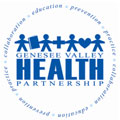 |
Sustainability Plan
This Trappist Monastery, established in 1944, was facing increasing health care and operational costs and needed a plan that would allow them to continue for the next 100 years. The Monks, by the Rule of St. Benedict, prefer to ‘live from the work of your hands” rather than accept donations, and do not get financial support from the Catholic Church. Capitalizing on macro trends on which the Monastery could capitalize, CSG designed a plan that not only allows the Monastery to earn enough money to become sustainable, but also allows greater solitude for the Monastic Community.
|
 |
Organizational Value Proposition®
This organization started a grassroots health insurance program that allowed the uninsured to have a medical home and a relationship with a physician rather than the emergency room. They had many groups at the table, from hospitals to physicians to city governments, and needed an outside perspective on the value of the program. An Organizational Value Proposition® provided the objective evidence that the program, through cost effectiveness, less time off from work, and quality of life enhancements, provided a 10 to 1 return for its members. |
 |
Sustainability Plan Followed by First Fundraising Campaign
This health network faced an uphill battle when it came to raising funds. It had no physical office, no official board, and operated under the radar of many potential funders. The Sustainability Plan plotted the most promising course of action by sharpening their focus and articulating measurable outcomes that represented value to investors. The ensuing campaign took the organization from one that was entirely dependent on grants to one that is self standing and a true public private partnership. |
 |
Fundraising Campaign
This highly successful group did not have the funds it needed to operate as effectively as it could. Drawing strongly on public sector support that relied heavily on an investment-based case, CSG orchestrated and staffed the campaign that went well over goal and gained much needed visibility for the organization. This organization no longer relies solely on government grants for sustainability and now has partnerships with local government, private foundations, individuals, and the corporate community. |
 |
Third Party Fundraiser
With so many nonprofits asking for money, this community organization needed the extra boost that only an Organizational Value Proposition® could provide. Focusing on the true value of their donated labor, construction materials, and neighborhood improvement, CSG worked with their fundraiser to make this impact known and their campaign a success. |
 |
Self-Directed Fundraising
A Community Center in South Carolina needed to raise money to replace initial grants that had run their course. CSG helped design the fundraising strategy and worked with staff to develop their Organizational Value Proposition® to demonstrate how the Center benefited the area. Staff used these tools to justify larger investments and ensure a more successful campaign. |
 |
Campaign Outcomes
This youth organization needed to add some horsepower to their $20 million campaign. CSG’s Organizational Value Proposition® was just the solution, and will be used to demonstrate to investors their organization’s impact on area teenage pregnancy, crime, and educational attainment. These outcome values were so impressive that they will become a pivotal part of future marketing efforts. |
 |
ROI Report and Independent Feasibility
After each campaign over the last eight years, this community hired CSG to objectively validate their impact on the community, including how the earnings from the jobs they helped create were spent throughout the area. CSG’s report then became the foundation of their case to raise $2 million over the next four years. Since CSG had earned the trust of community leaders, we were also asked to conduct the funding feasibility study for their next campaign. |
 |
Funding Strategy and Volunteer Fundraising Training
Rather than have a Brownfield study sit on a shelf, CSG turned it into an active effort to transform an eyesore into a new training/educational facility. Coordinating efforts of the City, County, Chamber of Commerce, and a nearby Community College, an old hospital site will be transformed into a community asset. CSG designed the funding strategy and trained local leaders to raise the needed private funds to purchase the property and qualify for federal funding. |
 |
Federal Appropriations
In order to position their area as the ideal location for Homeland Security training, this North Carolina organization needed to demonstrate to local, state, and federal agencies the positive economic impact this effort would produce. The presentation produced by CSG was used as a briefing by federal legislators to help make their case for millions of dollars in funding. |

